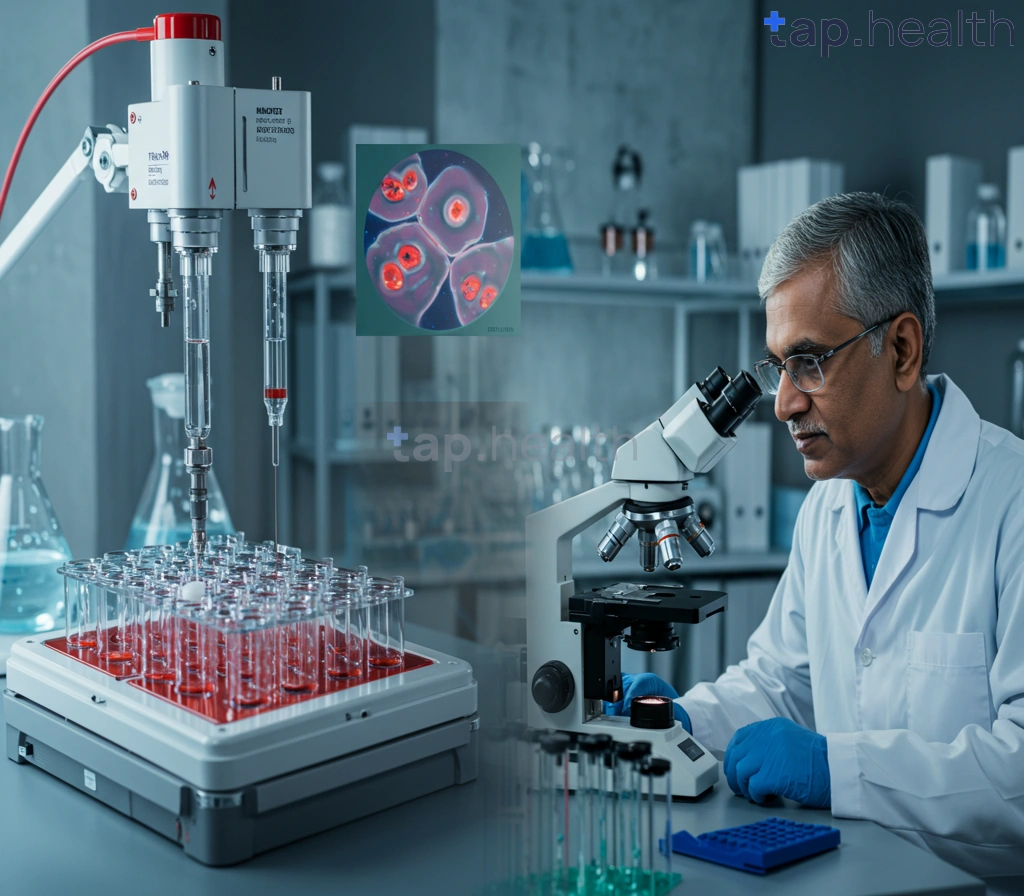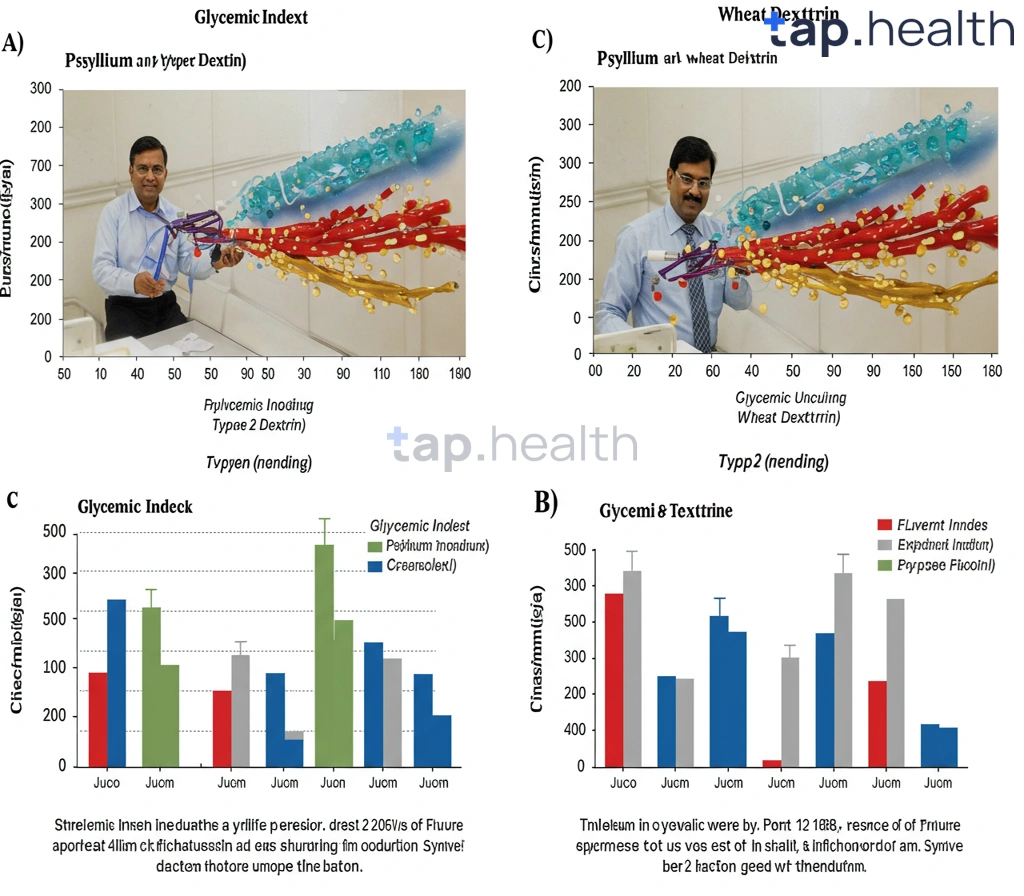Table of Contents
- Microscopy’s Role in Advancing Diabetes Research
- Microfluidics: Revolutionizing Diabetes Diagnostics
- Innovative Microscopy Techniques for Diabetes Studies
- How Microfluidics Improves Diabetes Treatment
- A Guide to Microscopy and Microfluidics in Diabetes Research
- Frequently Asked Questions
- References
Are you curious about the exciting breakthroughs happening in diabetes research? We are too! This blog delves into the fascinating world of Advancing Diabetes Research: Microscopy and Microfluidics Innovations, exploring how these cutting-edge technologies are revolutionizing our understanding and treatment of this complex disease. From visualizing cellular processes at the microscopic level to creating miniature lab-on-a-chip devices, these advancements are paving the way for earlier diagnosis, personalized medicine, and ultimately, better outcomes for those living with diabetes. Get ready to discover how miniaturization and high-resolution imaging are transforming the landscape of diabetes research!
Microscopy’s Role in Advancing Diabetes Research
Microscopy plays a crucial role in understanding the complexities of diabetes and its devastating complications, particularly in regions like India and other tropical countries where diabetes prevalence is high. Advanced microscopic techniques offer unprecedented insights into the cellular and molecular mechanisms driving the disease. This is particularly vital given that diabetes significantly increases the risk of kidney disease, with nearly 30% of those with diabetes developing diabetic nephropathy.
Visualizing the Damage: From Cells to Tissues
High-resolution imaging techniques, such as confocal and super-resolution microscopy, allow researchers to visualize the structural changes within the kidneys of individuals with diabetes. These techniques reveal the damage to glomeruli, the filtering units of the kidneys, providing a detailed understanding of how diabetic nephropathy progresses at a cellular level. This visual data is invaluable for developing and testing new therapeutic strategies. Furthermore, in vivo microscopy offers the potential to observe disease progression in real-time, leading to more personalized and effective treatments. Understanding the impact of diabetes on blood flow is also crucial; you can learn more about this connection in How Does Diabetes Affect Blood Flow?.
Microfluidics: A Powerful Tool for Diabetes Research in Resource-Constrained Settings
The integration of microfluidics with microscopy offers a powerful combination for diabetes research, particularly beneficial in resource-constrained settings prevalent in many Indian and tropical countries. Microfluidic devices allow for the creation of miniaturized models of the human kidney, enabling high-throughput screening of potential drug candidates. Coupled with advanced microscopy, researchers can assess the effectiveness of these drugs in preventing or reversing kidney damage, leading to the development of more affordable and accessible treatments for diabetic nephropathy. This precision approach allows for efficient utilization of resources and accelerates the development of effective solutions. The development of new technologies offers significant hope for improving diabetes management; read more about this in How Can New Technological Advances Improve Diabetes Lifestyle?.
The Future of Diabetes Research in India and Tropical Regions
Investment in advanced microscopy and microfluidics technologies is crucial for advancing diabetes research and improving patient outcomes in India and other tropical countries. The development of cost-effective, portable microscopy systems adapted to local conditions will be a key factor in ensuring widespread access to innovative diagnostic and treatment strategies. Collaborations between research institutions, healthcare providers, and government agencies are essential to address the growing challenge of diabetes and its complications.
Microfluidics: Revolutionizing Diabetes Diagnostics
Microfluidics is emerging as a game-changer in diabetes diagnostics, particularly crucial in India and other tropical countries where 50% of diabetes cases remain undiagnosed, according to the International Diabetes Federation. This technology manipulates tiny fluid volumes within microchannels, enabling rapid, low-cost, and highly sensitive diagnostic tests. Traditional methods often require large sample volumes and specialized equipment, posing significant barriers in resource-limited settings. Microfluidic devices, however, offer a portable and user-friendly alternative.
Point-of-Care Diagnostics: A Boon for Rural Communities
The portability of microfluidic devices is especially relevant in geographically diverse and often underserved regions of India and other tropical nations. These devices can be deployed in remote clinics and rural areas, bringing advanced diagnostic capabilities closer to patients. This is vital for early detection and timely intervention, which are critical factors in managing diabetes and preventing serious complications. Early diagnosis can significantly improve patient outcomes and reduce the overall burden of this chronic disease.
Technological Advancements and Future Directions
Current research focuses on integrating microfluidics with other technologies, such as advanced microscopy, for even more precise and comprehensive diabetes diagnostics. This includes developing devices that can detect not only glucose levels but also other key biomarkers indicative of diabetes complications. The integration of artificial intelligence and machine learning algorithms further enhances the analytical capabilities of these microfluidic platforms, promising faster and more accurate results. The potential for improving diabetes management in India and other tropical countries through microfluidic innovations is immense. Further investment in research and development, coupled with effective implementation strategies, is key to realizing this potential and improving the lives of millions affected by this prevalent disease. The advancements in AI are also playing a crucial role; learn more about how AI helps in monitoring and managing diabetes. While early detection is key, understanding the possibilities of reversing diabetes is also important. Check out this article on how to reverse diabetes permanently for more information.
Innovative Microscopy Techniques for Diabetes Studies
Advancing Diabetes Research in India and Tropical Countries
Microscopy plays a crucial role in understanding the complexities of diabetes, particularly in resource-constrained settings. Over 75% of people with diabetes live in low- and middle-income countries, including a significant population in India and other tropical regions. This necessitates affordable and accessible diagnostic tools. Advanced microscopy techniques, such as super-resolution microscopy and advanced fluorescence imaging, offer unprecedented insights into pancreatic beta-cell function, insulin resistance, and microvascular complications. These techniques allow researchers to visualize cellular processes at a level of detail previously unattainable, leading to more effective treatment strategies. Maintaining a strong immune system is also crucial for managing diabetes; you can learn more about boosting immunity while managing diabetes in our related article.
Improving Diabetic Diagnosis and Treatment
Specifically, techniques like confocal microscopy enable detailed imaging of islet architecture and blood vessel formation, crucial for understanding the progression of diabetic complications. Furthermore, the use of microfluidics, coupled with advanced microscopy, creates in vitro models that mimic the in vivo environment, allowing for high-throughput screening of potential therapeutics. This is particularly relevant for developing targeted therapies for the specific needs of diverse populations within India and tropical countries, where genetic predispositions and environmental factors may influence disease progression. The development and adoption of these technologies are critical to improving the diagnosis and management of diabetes in these regions. Careful consideration of dietary supplements can also play a role; read more about safe and effective dietary supplements for diabetes care here.
Call to Action: Collaboration for a Healthier Future
The need for innovative solutions to address the diabetes epidemic in India and tropical countries is paramount. Strengthening collaborations between researchers, healthcare professionals, and policymakers is crucial to ensuring that the latest advancements in microscopy and microfluidics are accessible and effectively implemented. This includes investing in training programs, developing affordable technologies, and supporting research initiatives focused on region-specific challenges. Let’s work together to improve the lives of millions affected by diabetes.
How Microfluidics Improves Diabetes Treatment
The staggering cost of diabetes in the U.S., estimated at $327 billion annually in direct medical expenses and lost productivity, underscores the urgent need for innovative treatment approaches. Microfluidics, a technology manipulating tiny fluid volumes, offers a powerful solution, particularly relevant in resource-constrained settings common across many Indian and tropical countries.
Miniaturization for Better Diagnostics and Treatment
Microfluidic devices enable the creation of portable, affordable diagnostic tools for diabetes. These devices can perform rapid blood glucose monitoring, HbA1c testing, and even detect early markers of diabetic complications, improving early diagnosis and intervention significantly. This is crucial in regions with limited access to advanced medical facilities. Furthermore, microfluidics facilitates the development of personalized medicine approaches. By analyzing individual patient samples, researchers can tailor insulin delivery systems and monitor treatment efficacy with greater precision. The integration of these microfluidic advancements with artificial intelligence technology offers even greater potential for improved diabetes management.
Point-of-Care Diagnostics and Accessibility
The miniaturization inherent in microfluidics translates to increased accessibility for diabetes management. Point-of-care diagnostics, enabled by these technologies, empower individuals in remote areas of India and other tropical nations to monitor their blood glucose levels without relying on distant labs or expensive equipment. This aspect is particularly vital in improving compliance with treatment regimens and preventing complications. Furthermore, the low cost of these devices makes them suitable for widespread adoption, particularly benefiting underserved populations. While microfluidics offers significant advancements, the potential for AI-driven interventions to reverse diabetes also presents a compelling avenue for future research.
Future Implications for Diabetes Research in Tropical Regions
The ongoing development of microfluidic technologies promises even greater improvements in diabetes management. The creation of sophisticated biosensors for continuous glucose monitoring, coupled with the potential for automated insulin delivery, will revolutionize diabetes care in India and other tropical regions, ultimately reducing the significant burden of this disease. Investing in research and development of these microfluidic innovations will not only benefit the patients but also contribute to a more sustainable healthcare system.
A Guide to Microscopy and Microfluidics in Diabetes Research
Diabetes, a growing global concern, disproportionately affects populations in India and other tropical regions. 61% of people with diabetes are aged between 20-64 years, representing a significant portion of the workforce in these countries. Understanding the disease’s progression and developing effective treatments are crucial. Microscopy and microfluidics are emerging as powerful tools in this fight.
Microscopy’s Role in Diabetes Research
Advanced microscopy techniques, such as confocal and super-resolution microscopy, offer unparalleled insights into the cellular mechanisms underlying diabetes. Researchers can visualize the intricate interactions between pancreatic beta cells, insulin production, and the development of complications like diabetic retinopathy and nephropathy. This detailed visualization aids in identifying potential therapeutic targets and assessing the effectiveness of new treatments. Specific applications tailored to the prevalent types of diabetes in these regions are particularly crucial.
Microfluidics: A Powerful Tool for Disease Modeling
Microfluidics provides a platform for creating miniature models of the human body, specifically focusing on pancreatic islets and blood vessels. These “organs-on-a-chip” offer a cost-effective and ethical alternative to animal models, allowing researchers to test the efficacy of various drugs and therapies in a controlled environment. This is especially valuable in regions with limited access to resources. Microfluidic devices can also enable high-throughput screening, accelerating the drug discovery process.
Addressing the Regional Need
The high prevalence of diabetes amongst the 39% aged 65+ population in India and tropical countries necessitates innovative approaches. Investing in advanced microscopy and microfluidics research tailored to the specific genetic and environmental factors influencing diabetes in these regions is vital. This necessitates collaboration between international research institutions and local experts to ensure the development of accessible and effective solutions. This focused research will play a key role in improving the lives of millions. Understanding the link between diabetes and obesity is also crucial, as highlighted in Understanding the Link Between Diabetes and Obesity. The challenges faced by older individuals with diabetes are further discussed in Managing Diabetes as You Age: Challenges and Solutions.
Frequently Asked Questions
Q1. How are microscopy and microfluidics improving diabetes research?
Advanced microscopy techniques like confocal and super-resolution microscopy help visualize the cellular damage caused by diabetes, leading to better treatment development. Microfluidics, using miniaturized kidney models, allows for efficient drug screening, speeding up the creation of affordable therapies.
Q2. What is the significance of these technologies for diabetes care in countries like India?
In countries with high diabetes prevalence and limited resources, these technologies are crucial. They enable point-of-care diagnostics, leading to earlier detection and better management of the disease, especially in underserved areas.
Q3. What are the main benefits of using microfluidic kidney models in diabetes research?
Miniaturized kidney models in microfluidics allow for high-throughput drug screening. This significantly accelerates the development process for new diabetes treatments, making it more efficient to find effective and affordable therapies.
Q4. How can these technologies improve diabetes diagnosis and management?
The integration of microscopy and microfluidics facilitates the development of point-of-care diagnostics. This allows for earlier and more accessible diagnosis and management of diabetes, particularly benefiting those in underserved areas with limited access to healthcare.
Q5. What role do collaborations play in implementing these technologies effectively?
Successful implementation requires strong collaboration between research institutions, healthcare providers, and governments. This collaborative approach is essential to address the significant burden of undiagnosed and poorly managed diabetes, improving patient outcomes across affected regions.
References
- Electronic Health Records-Based Data-Driven Diabetes Knowledge Unveiling and Risk Prognosis : https://arxiv.org/pdf/2412.03961
- A Practical Guide to Integrated Type 2 Diabetes Care: https://www.hse.ie/eng/services/list/2/primarycare/east-coast-diabetes-service/management-of-type-2-diabetes/diabetes-and-pregnancy/icgp-guide-to-integrated-type-2.pdf




